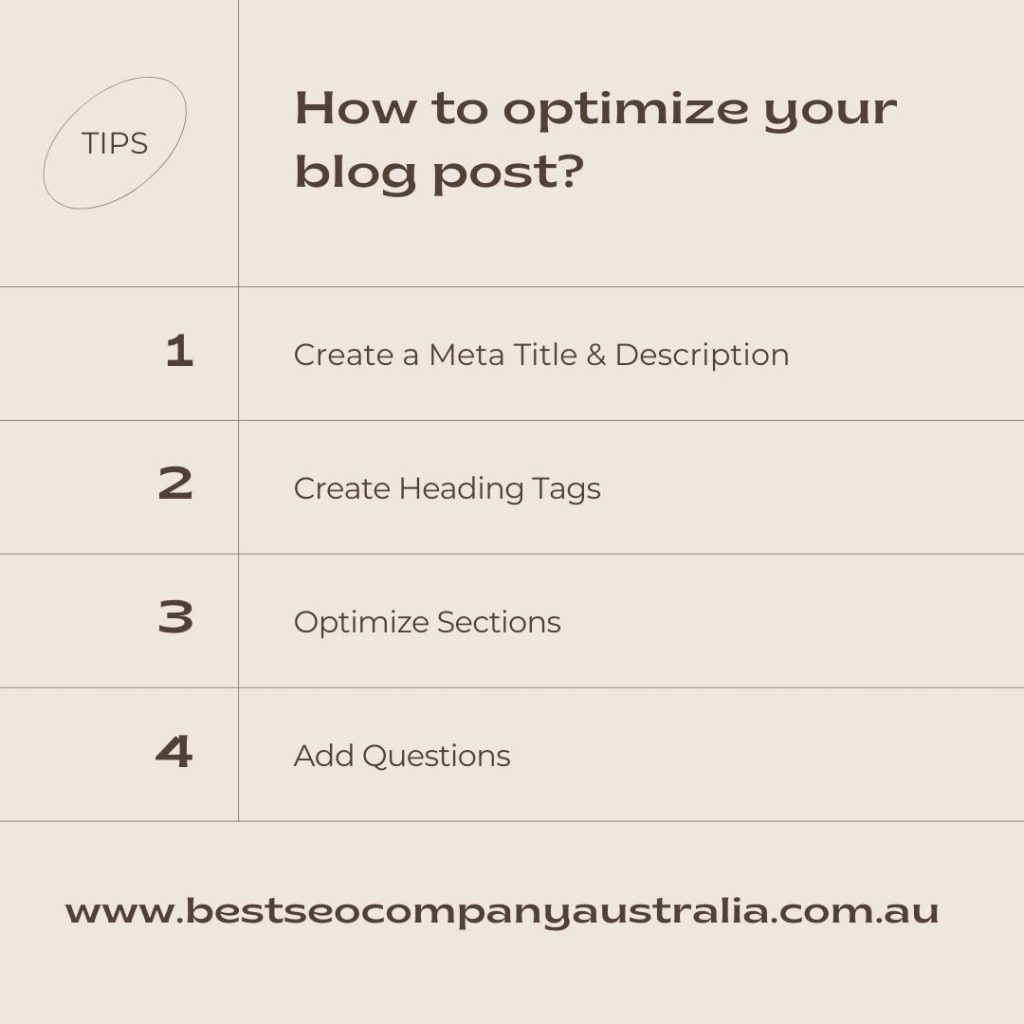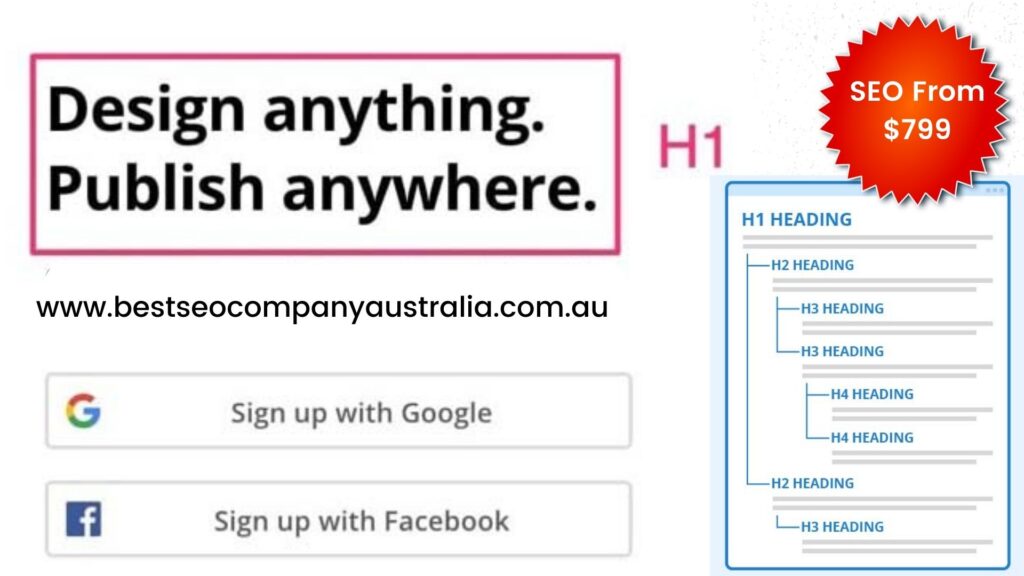How To Optimize Your Blog Post
- Home
- Service

Blog Post Optimisation?
How To Optimise Your Blog Post?
What is the best way to optimize your blog post? It’s a question that we all ask ourselves. Blogging has become an important marketing tool for businesses and individuals.
We’re always looking for ways to get more targeted visitors, so they will read our content, share it with their friends on social media sites like Facebook and Twitter, click on links within the article (which drives traffic), subscribe to our RSS feed (which helps us grow in Google search rankings) and buy products or services from us.
How To Write SEO Optimised Blog?
1. Grab your reader’s attention with a creative and captivating title
2. Write an informative and engaging introduction that will make the reader want to keep reading
3. Make sure you have strong content supported by evidence, research, or statistics
4. Include a call-to-action at the end of each blog post so readers know what they should do next

Step By Step Instructions
Optimise Your Blog Post For Higher Search Engine Rankings
There are many ways to optimize your blog post for higher search engine rankings. One way is by using keywords in the meta tags, title, and content of your posts. Another way to rank high on google searches is by having a good amount of backlinks from quality websites that have been researched and verified as safe.
There is also the option to use social media networks such as Facebook, Twitter, LinkedIn or Google Plus to increase traffic numbers which will eventually lead up to more people clicking on your posts and reading them. The best advice I can give you if you want your blog post ranking well? Start with a catchy headline!
Step 1: Create a Meta title
Create a meta title with at least 60 characters and use some of the below high frequency keywords. You’re about to learn how to create a meta title for your blog. This is an important step in the blogging process because it will help you rank higher on search engine results pages, which means more people will be able to find your blog.
The best way to create a meta title is to make it catchy and short. There are different ways you can do this, but the most effective one is by using a question that your audience may have when they see the post. This will get them interested in reading more about what you’ve written. You should also consider using keywords for search engine optimization purposes so people can find your blog posts easier through Google or other search engines.


Step 2: Optimise Meta Title For Better Reach
A meta title is a short, descriptive sentence that goes in the page’s HTML code header. It appears at the top of your browser window and in search engine results pages (SERPs) where they are often displayed as a clickable title. A meta title can be used to increase traffic by drawing people into the post with a compelling or intriguing summary statement. Use this blog post to learn how to optimize your blog posts for better reach!
A recent study showed that the meta title is the most important factor for SEO. What are some of the ways you can optimize your meta title to increase reach? One way is by using keywords, which makes your content more visible to search engines and people searching on Google or Bing.
Another way is by telling a story so that people will be hooked from reading the opening sentence. A third way of optimizing your post’s meta title involves writing a call-to-action with an offer or promoting an event. Finally, make sure you include any social media handles in order to boost engagement!
A recent study published by Moz shows how important it is to have good metadata titles when publishing blog posts online.
Your meta title or title tag should not be the same as your H1 tag. Meta titles are an opportunity to target additional keywords and possibly get some additional organic traffic. Don’t try to stuff keywords!
Step 4: Optimise Meta Description For Better Reach


Step 5: Create H1 Tag
The H1 tag is the most important part of your blog post content. It should be used to summarize the entire blog post in one sentence and it needs to be engaging. For example, my company name is called “Optimize.” But I don’t want a title that says “Create and Optimize H1 Tag”. That’s not very catchy or interesting. So instead, I have this awesome headline: Create an Engaging H1 Tag for Your Blog Post!
A few years ago, Google began penalizing websites with low-quality content by ranking them lower in search engine results pages. In order to avoid this penalty and keep your website at the top of the rankings, it is important that you optimize your H1 tags.
The H1 tag is what gives a web page its title and shows up as bold text on the left side of a browser’s screen when someone visits your site. While an effective H1 tag can be hard to create, there are some simple tips that you can use to make sure you’re optimizing yours correctly.
Step 6: Create Sections
The best way to keep your blog organized is by using sections. Sections are a great way to organize the content of your blog because they give you more than one place for different types of posts and help visitors find what they are looking for easier. Check out this post for some tips on how to create awesome sections! More in depth content ranks better!
Using Related searches in your most important tags can greatly improve your chance of ranking for some additional keywords besides the one you are targeting. Using verify section keywords will even help more like using H2, H3 and H4.
Step 7: Add Questions
Use as many questions as you can in your sections. The more the better! Use at least 4 questions.
Use Questions in H1, H2, H3, or Strong Tag. This will improve the chances to rank for that exact questions query.

